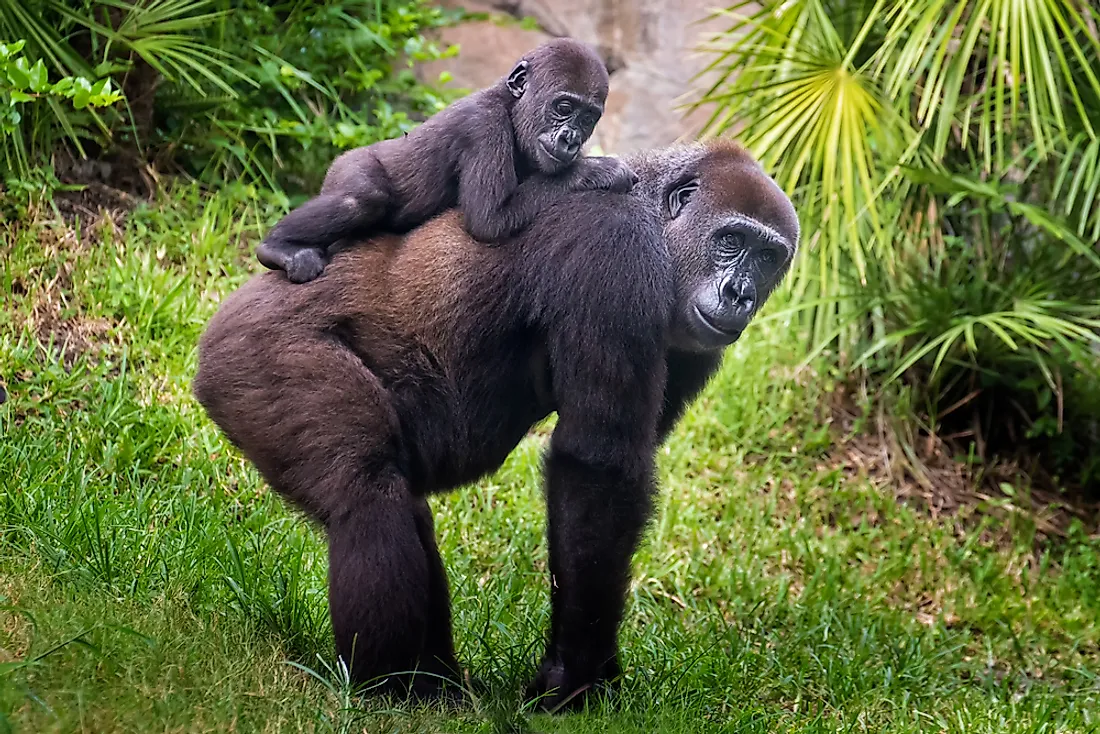Gorilla Facts - Animals of Africa

Gorillas are the world's largest primates. Both species of the gorilla, the eastern and western gorilla, are critically endangered. The DNA of gorillas has a 95-99% match to that of humans.
Physical Description
Average wild males weigh between 300 and 430 pounds while females weigh half as much. Adult males have a height ranging from 4 feet 11 inches to 5 feet 11 inches and arm span between 7 feet 7 inches and 8 feet 6 inches. Females are smaller in all aspects. In captivity, gorillas are capable of growing to even bigger sizes. The eastern gorilla is darker than the western gorilla, but the mountain gorilla is the darkest and has the thickest fur.
Behavior
Gorillas are highly sociable animals that live in groups of 5 to 30 gorillas with an adult male or silverback as the leader. A silverback is an old gorilla above 12 years old. At that age, they develop a patch of silver on the back. The leader makes all the decisions such as conflict mediation and determining movement, among other decisions. Younger males, also called blackbacks, serve as additional protection. Bonds exist between males and females for a mutually beneficial relationship of mating and protection. Male to male bonds are weaker.
Habitat and Range
The range of both species of gorillas is divided by the Congo River and the tributary rivers. The western gorilla lives in West Africa while in eastern and central Africa the eastern gorilla resides. The population is distributed among plenty of habitats. Gorillas’ habitats are diverse and range from swamps to montane forests with heights ranging from 2,130 feet and 13,120 feet above the sea level for the case of eastern mountain gorillas. The habitats for the eastern lowland gorillas may be montane bamboo forests or lowland forests with heights between 1,969 and 10,853 feet. Western mountain gorillas live in elevations around 5,200 feet while western lowland gorillas reside in elevations between 490 and 5,250 feet above sea level.
Diet
Mountain gorillas feed mainly on foliage including shoots, leaves, and stems. These gorillas do not eat much fruit but have flexible diets. Eastern lowland gorillas’ diet is varied and differs every season. While they eat plenty of leaves and pith, fruits are very much part of the diet. In addition, they will also eat insects. Lastly, western lowland gorillas eat the most fruit with a little ants and termites in the diet. Gorillas rarely drink water since they feed on a lot of succulent plants full of water.
Reproduction
Females mature when they are around 10 years old while males mature at around 11 years. The infants are dependent on the mother until they are around six years where they are weaned and the mother and the infant sleep in different places. The mother then begins to ovulate again. The males play no active role in the upbringing.











